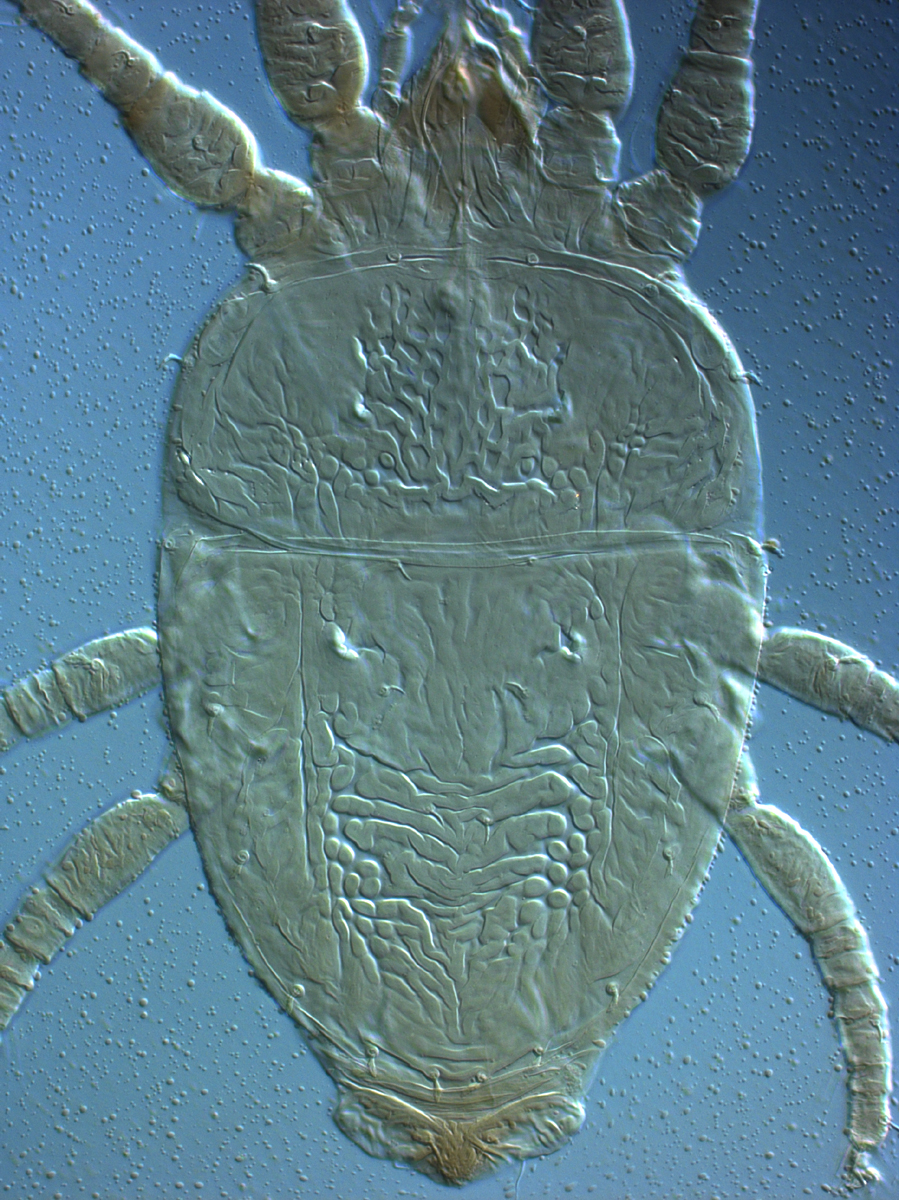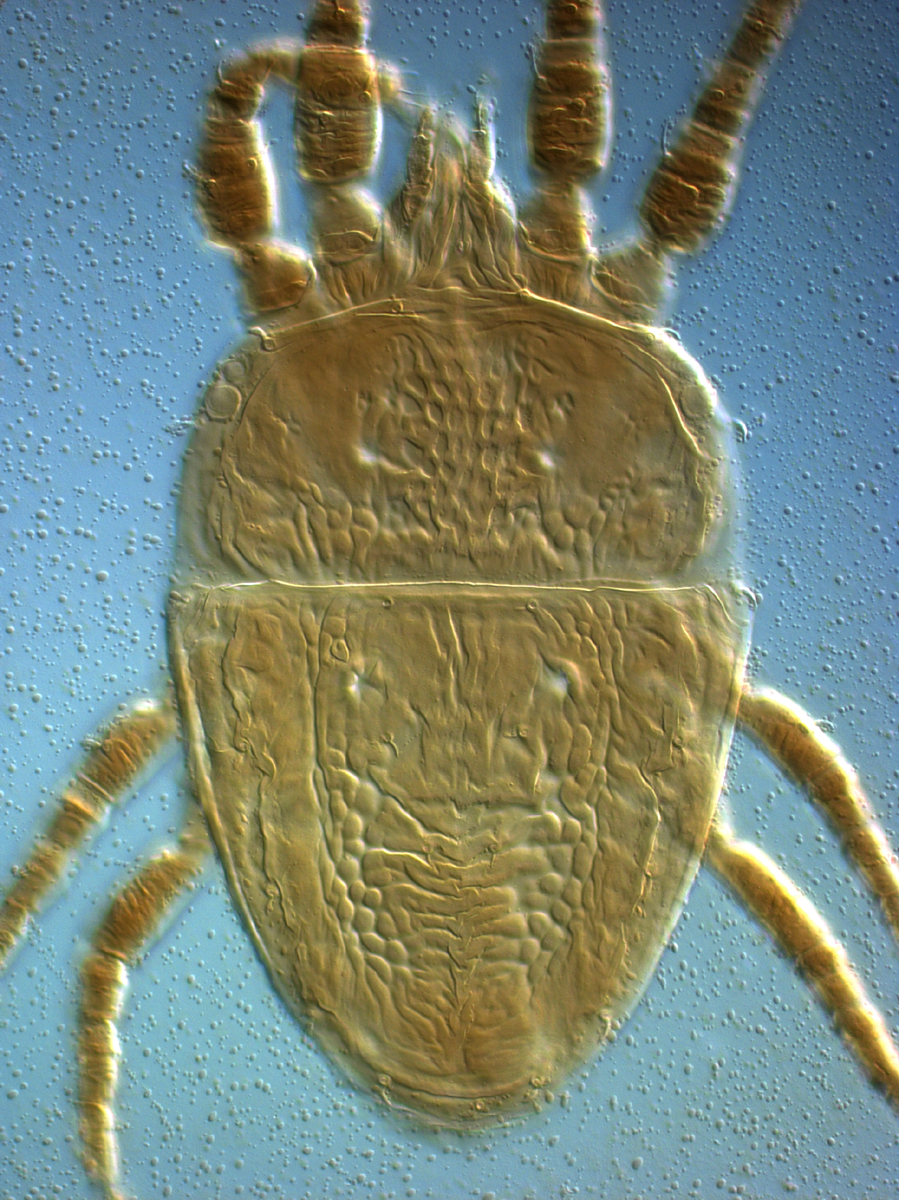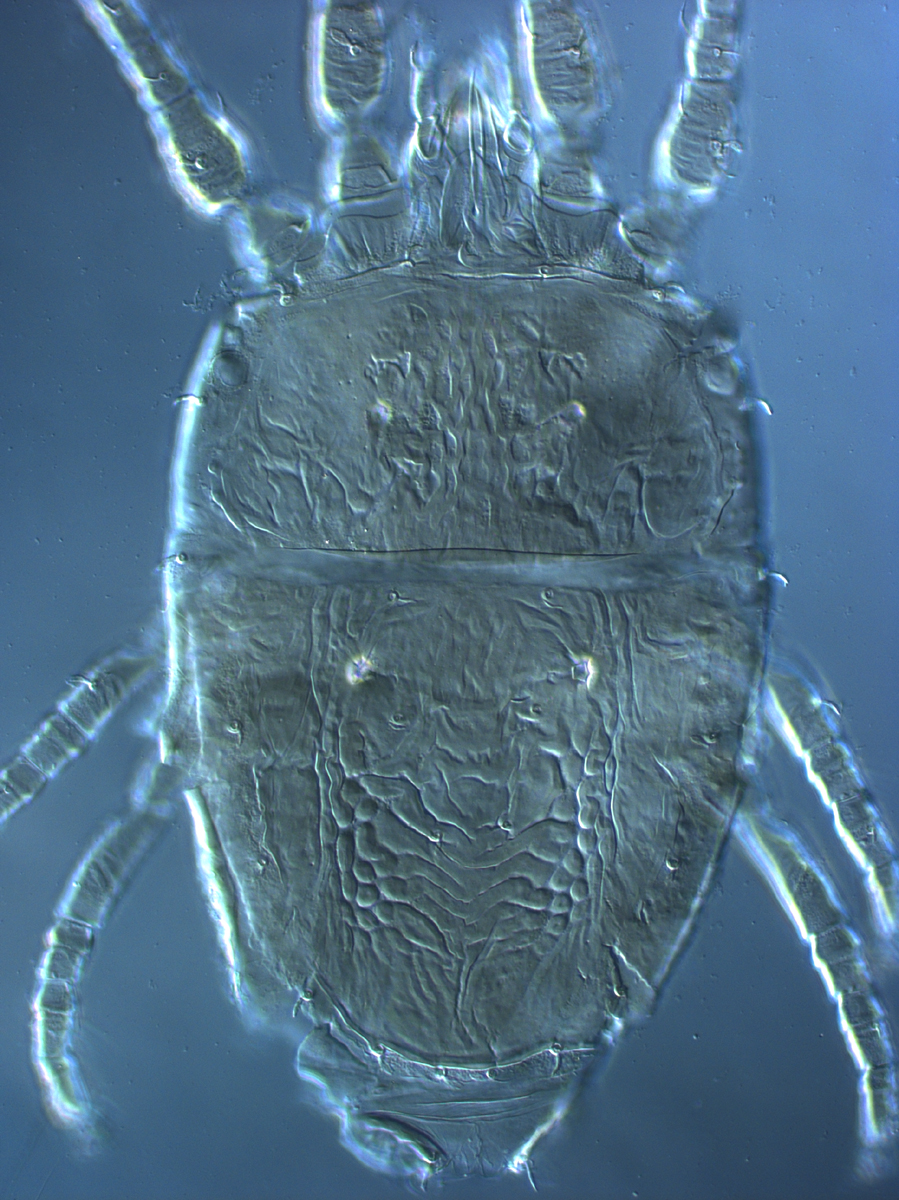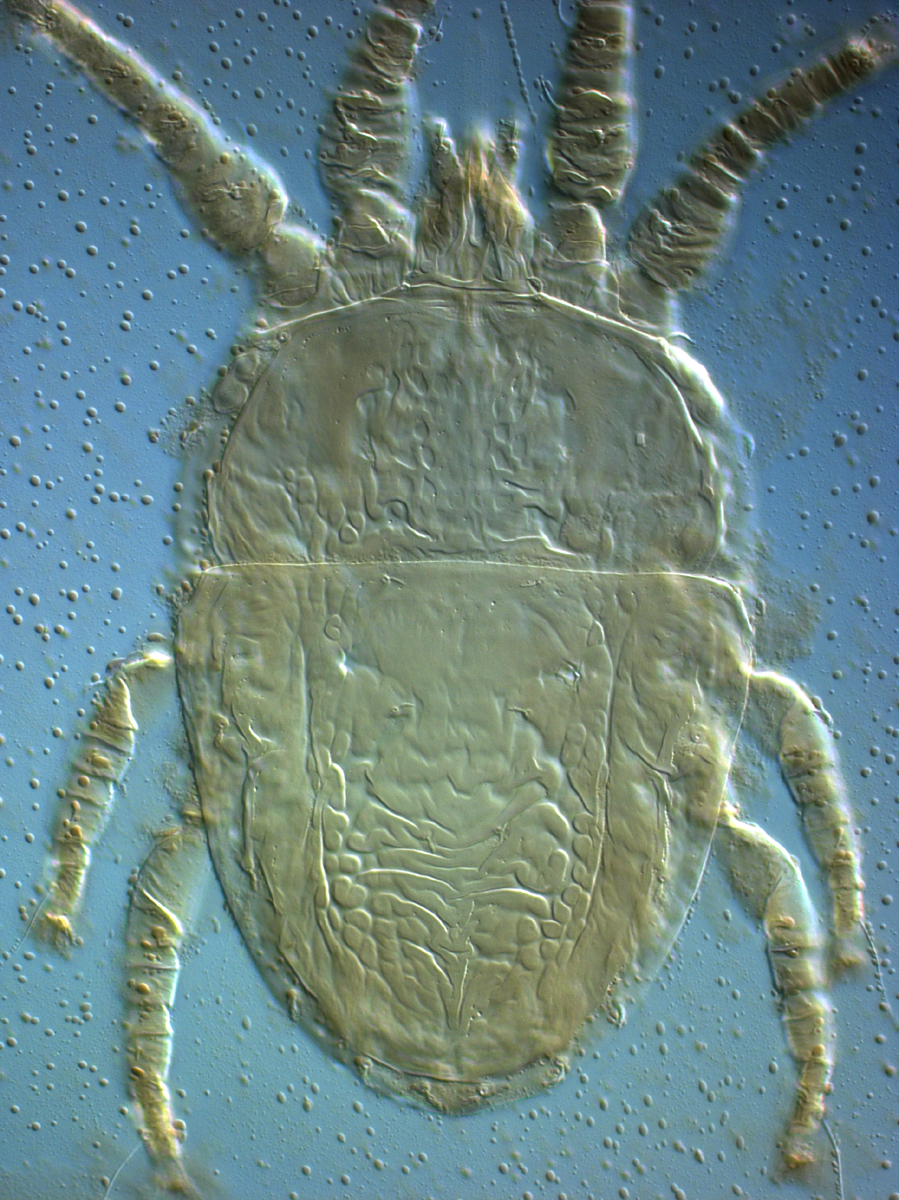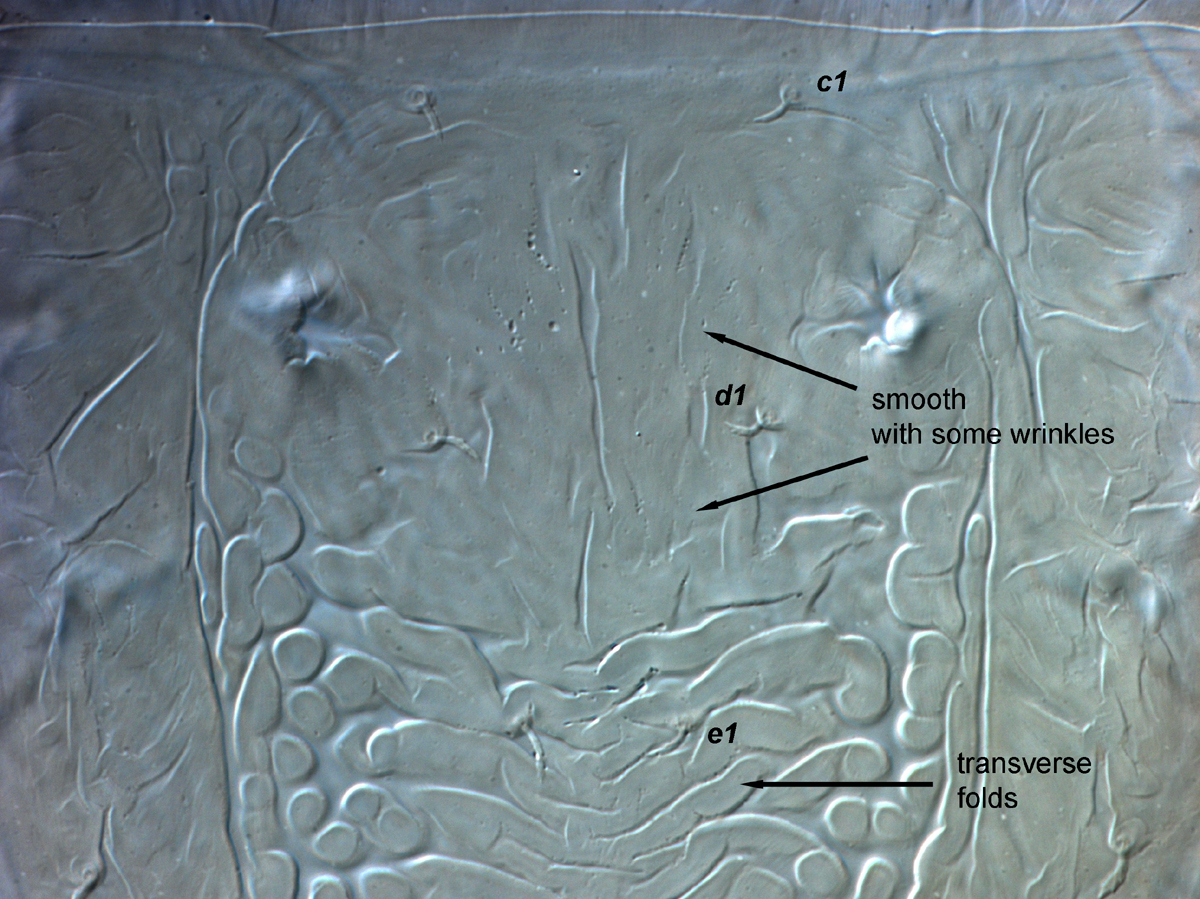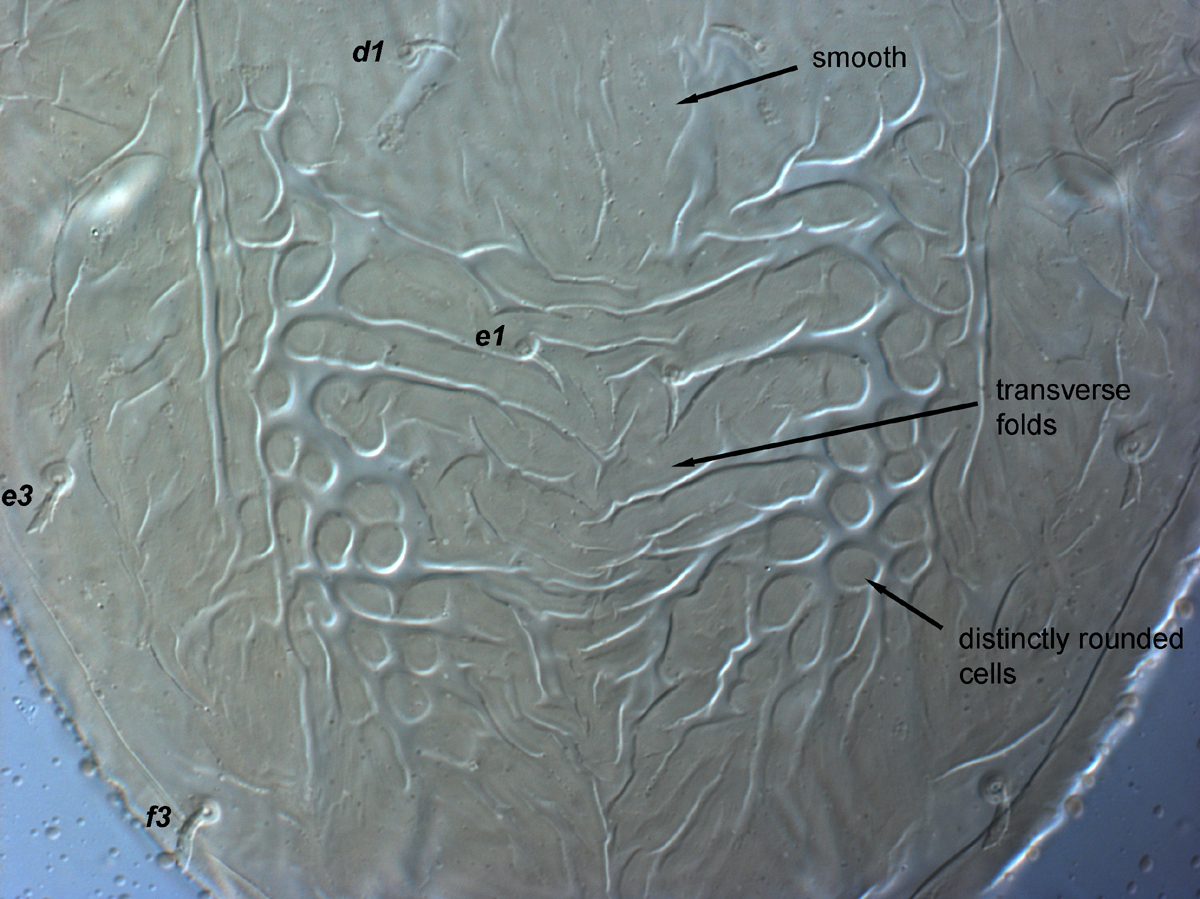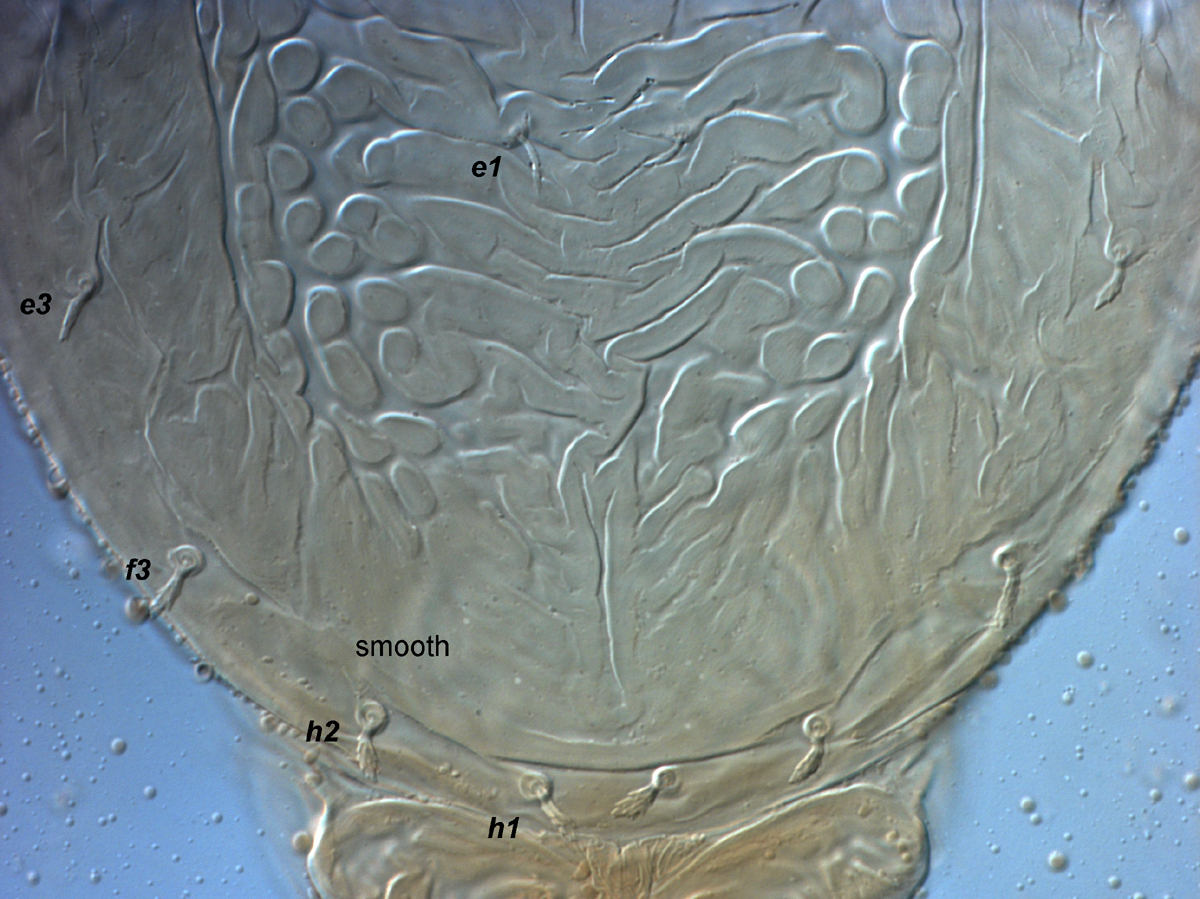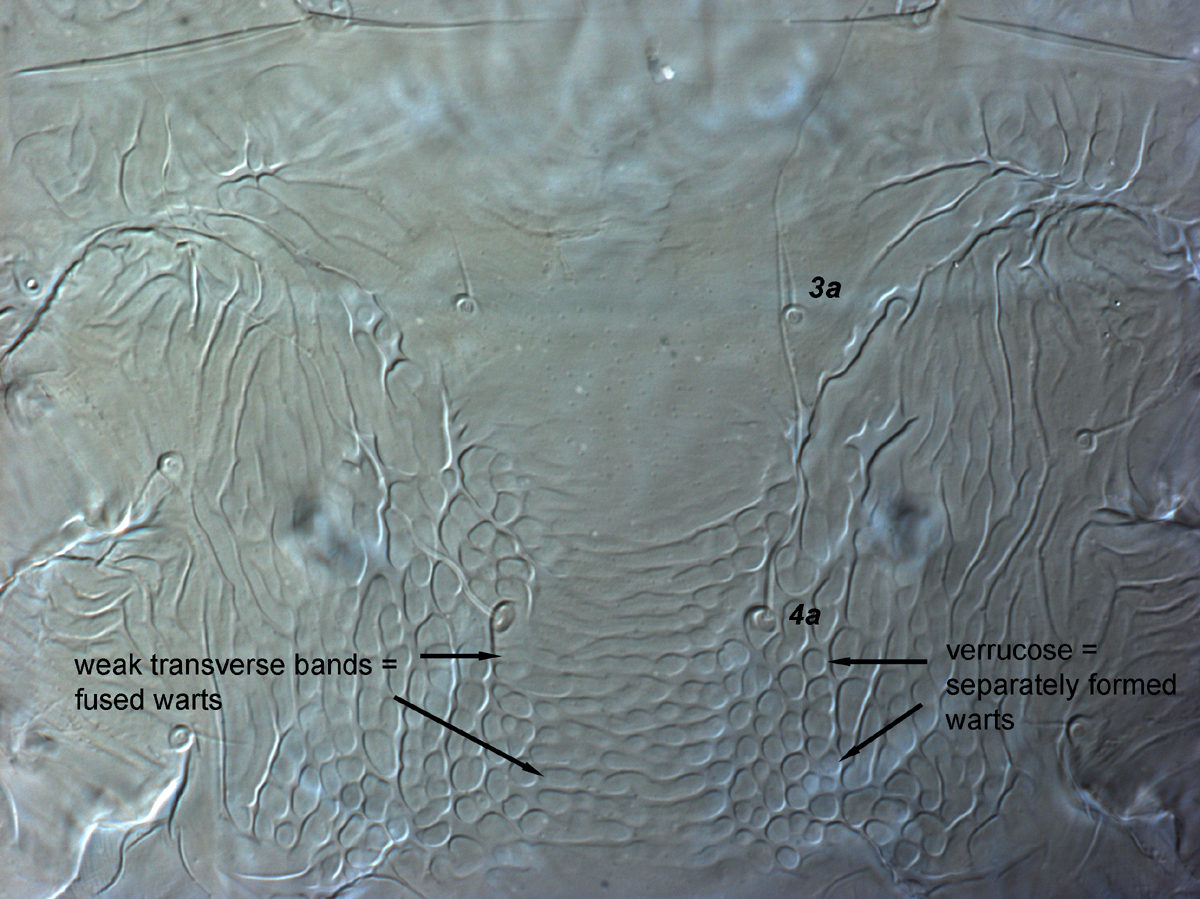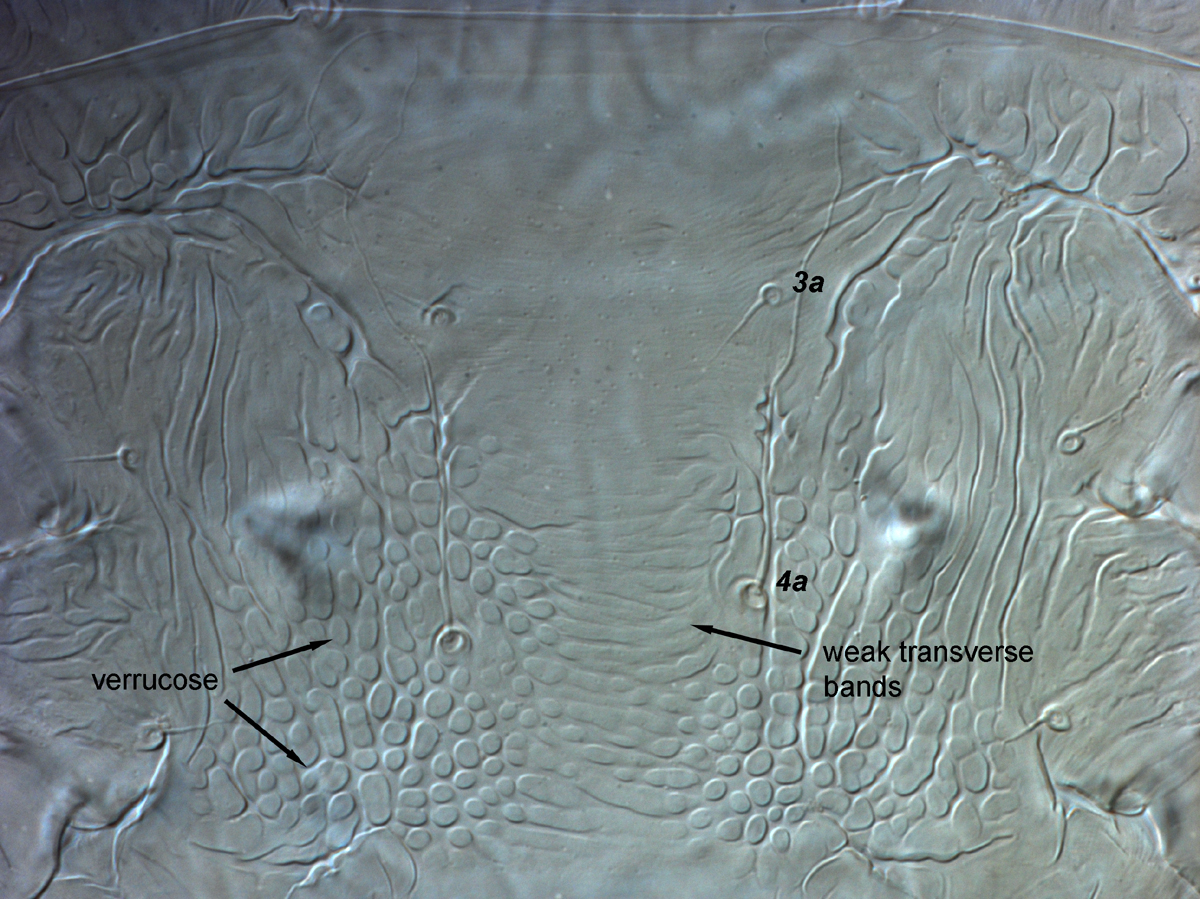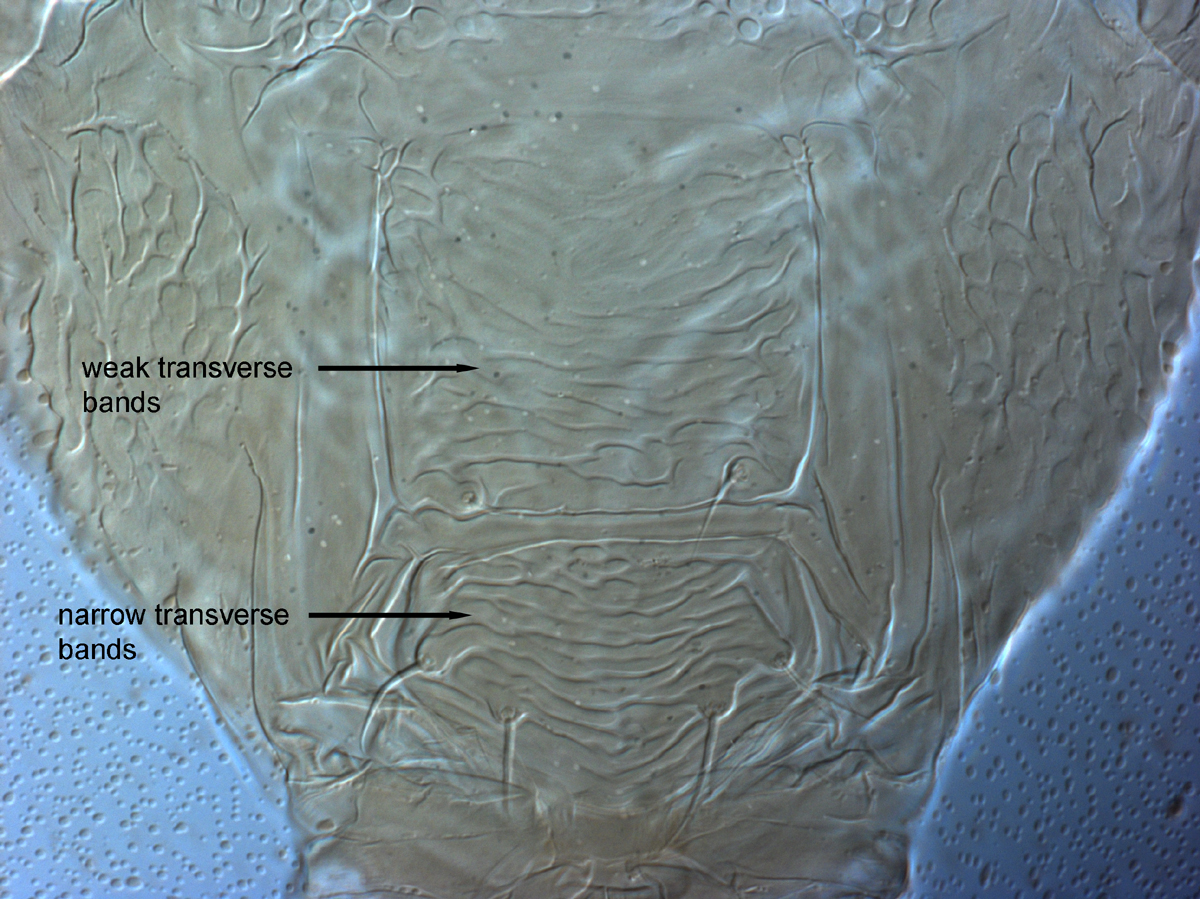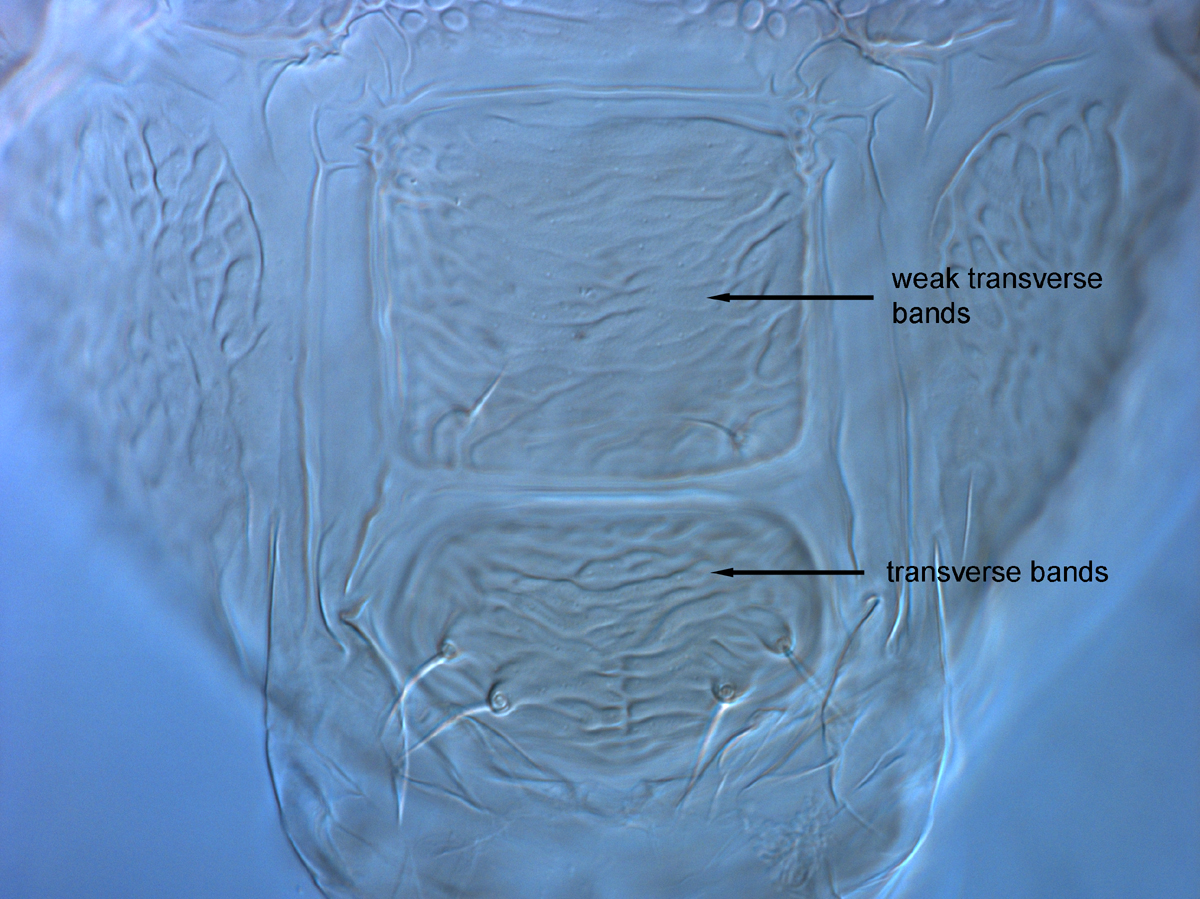Brevipalpus azores
|
Fig. 1. Brevipalpus azores, female dorsum. |
|
Fig. 2. Brevipalpus azores, female dorsum. |
|
Fig. 3. Brevipalpus azores, female dorsum. |
|
Fig. 4. Brevipalpus azores, female dorsum. |
|
Fig. 5. Brevipalpus azores, female prodorsum. |
|
Fig. 6. Brevipalpus azores, female anterior dorsal opisthosoma. |
|
Fig. 7. Brevipalpus azores, female central dorsal opisthosoma. |
|
Fig. 8. Brevipalpus azores, female posterior dorsum. |
|
Fig. 9. Brevipalpus azores, female dorsal seta on palp (indicated by arrows). |
|
Fig. 10. Brevipalpus azores, female venter, between coxae III-IV. |
|
Fig. 11. Brevipalpus azores, female venter, between coxae III-IV. |
|
Fig. 12. Brevipalpus azores, female posterior venter. |
|
Fig. 13. Brevipalpus azores, female posterior venter. |
Authority
Beard & Ochoa
Species group characters
Brevipalpus phoenicis species group
Dorsal opisthosomal setae f2 absent; tarsi II with 2 solenidia (one adaxial, one abaxial). Palps four segmented, setal formula 0-1-2-3(1s+2e) (s = solenidion, e = eupathidium).
Setal formula for legs I-IV (coxae to tarsi): 2-2-1-1, 1-1-2-1, 4-4-2-1, 3-3-1-1, 5-5-3-3, 9(1)-10(1)-5-5. Leg chaetotaxy: feI-II d, l', v', bv", fe III d, ev', fe IV ev'; ge I-II d, l', l", ge III-IV l'; ti I-II d, l', l", v', v", ti III-IV d, v', v".
Distribution based on confirmed specimens
Azores, Canary Islands, Democratic Republic of the Congo, Guatemala, Honduras, India, Portugal, Rwanda and Burundi, South Africa, Spain, USA
Species characters
Adult female habitus
Figures 1, 2, 3, 4
Prodorsum
Central (Fig. 5): cuticle with strong, broad areolae
Sublateral (Fig. 5): posterior region with reticulation forming a few rounded cells; with a distinct cluster of small rounded cells medially; anterior region with a large smooth region
Opisthosoma
c1-c1 to d1-d1: cuticle almost entirely smooth, with some weak wrinkles medially (Fig. 6)
d1-d1 to e1-e1: cuticle almost entirely smooth, with some weak wrinkles medially (Figs. 6, 7)
e1-e1 to h1-h1: cuticle with a series of strong transverse folds, abruptly becoming smooth towards h1-h1 (Figs. 7, 8)
Sublateral: anterior cuticle smooth; posterior cuticle with large distinctly rounded cells (Figs. 7, 8)
Palp
palp femurogenu with barbed, broad flat dorsal seta (Fig. 9)
Venter
Setae 4a-ventral plate (Figs. 10, 11): entirely verrucose, with separately formed rounded "warts"; central cuticle may have some weak transverse bands (formed by fused "warts")
Ventral plate (Figs. 12, 13): cuticle with weak transverse bands; without separately formed "warts"
Genital plate (Figs. 12, 13): cuticle with uniform narrow transverse bands
Spermatheca
A moderately thick duct is visible.
Hosts based on confirmed specimens
The most important host plant family for this mite is the Citrus family - Rutaceae (Citrus aurantium, C. reticulata, Citrus spp.; bitter orange, lemon, mandarine, tangerine).
Other hosts include: Datura stramonium (Solanaceae); Camelia sinensis (tea; Theaceae); Chinchona sp. (large leaf quinine; Rubiaceae); Hedera sp. (ivy; Araliaceae); Musa spp. (banana; Musaceae).
Remarks
Previously listed as Brevipalpus phoenicis species group sp. D.
Beard, J.J., Ochoa, R., Braswell, W.E. & Bauchan, G.R. (2015) Brevipalpus phoenicis (Geijskes) species complex (Acari: Tenuipalpidae) — a closer look. Zootaxa, 3944(1), 1-67. (open access: http://www.mapress.com/zootaxa/list/2015/3944%281%29.html)

